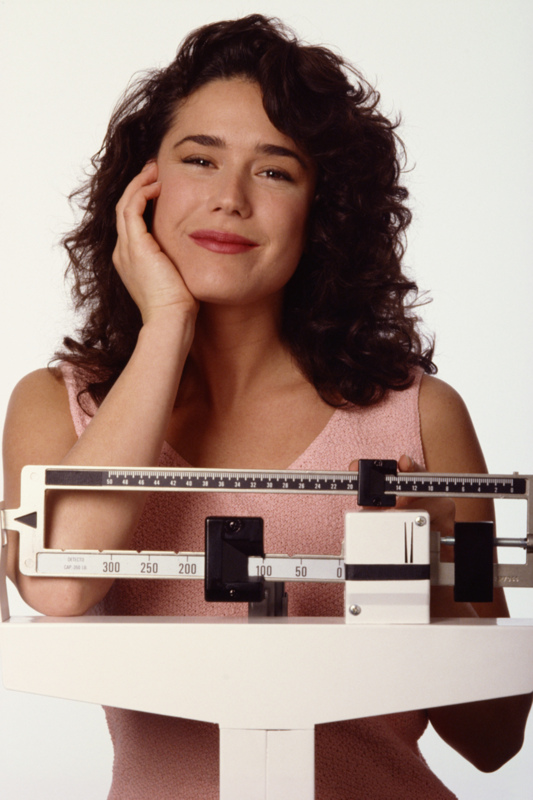Many – but not all – people like you find it helpful and motivating to try tracking your progress with overall fitness. It really gets pretty simple at this level.
Tracking fitness progress can be a simple as monitoring the change in the way your favorite jeans fit. While that is one way to know you are making progress, a better way is to track not only the fit of your clothes, but also scale weight, body measurements, and calorie deficit.
Scale weight
Change in weight is a numbers game. If losing weight is your goal, then you want to see a steady downward trend on your scale. The key word is trend. If you see an overnight gain of a couple of pounds, don’t despair. It is probably water weight and it will disappear as fast as it appeared.
Eat more calories than you expend and you’ll gain weight; eat fewer and you’ll lose weight. It is as simple as that.
The exception is a gain in muscle mass. Because muscle weighs more than fat, if you are strength training and your goal is to gain muscle mass, then your scale will show a gain … but so will it reflect in your other measurements too, so you’ll know you are heading in the right direction.
Body Measurements
There are a couple of ways to do this; one, by using a simple tape measure or two, using a body caliper. If you use a tape measure, ensure you measure the same places and use the same amount of tightness on the tape. Places measured should include:
- Neck – measure around the center of the neck with your head looking straight forward.
- Waist – take a measurement at belly button level.
- Hips – measure at the widest part.
- Thigh – Left or right, it doesn’t matter. What does matter is that you measure the same one in the same place each time.
Also, take your measurements at the same interval (like once a week) and at the same time of day as the body can vary in size throughout the day.
If you use a body fat caliper to measure bodyfat, measure in the same three places each time and average out the readings. Don’t be too concerned with the number – only how it is changing.
Calories Deficit
One tool that can help track calories is a fitness tracker. Most of them will show the number of calories burned throughout the day. Some also have a calorie counter where you can also track how many calories you consume. A weekly deficit of 3,500 calories will result in a loss of one pound. Break that down and it comes out to burning 500 more calories per day than you take in.
Tracking
The old adage of “What get measured gets done” holds true in fitness tracking too. Maintaining a written record of your measurements creates a trend so you can see overall how you are progressing. Charting using a bar graphs makes an easy way to see progress. Tracking also serves as motivation to keep moving forward toward your goal.
Tracking can be as simple as recording information in a journal to using sophisticated smartphone apps. The point is to use a method that works for you and one that you will use continuously. Give it a good try for a month to see if tracking your fitness progress helps keep you on whatever program you choose to follow.






